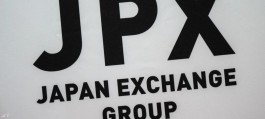The stablecoin market has reached a new phase of growth, with the total market cap hitting a new record, BeinCrypto reports. This achievement was achieved due to a combination of technological innovation, regulatory clarity, and increased institutional adoption of the sector.
USDT and USDC dominate despite new competitors emerging
DeFiLlama data shows that as of August 26, the market cap of stablecoins (excluding algorithmic stablecoins) has reached an all-time high of $168.51 billion. Tether’s USDT leads the market with a market cap of over $117 billion, accounting for about 70% of the total market cap.
Circle’s USDC has also seen continued growth. Although still below its 2022 peak, USDC’s market cap surpassed $34 billion in August 2024. These stablecoins reflect their critical role in the broader crypto ecosystem.
Although USDT and USDC remain the dominant forces, newcomers like PayPal’s PYUSD (PYPL) and First Digital’s FDUSD are gaining momentum. BeinCrypto reported that PYUSD’s market cap crossed the $1 billion mark late last week. This is a particularly notable achievement considering PayPal launched PYUSD just a year ago.
One of the main drivers behind this surge was its integration with the Solana blockchain in May 2024, which opened up new opportunities for users in Solana-based DeFi protocols that offer attractive incentives, such as annual returns of up to 20% on PYUSD deposits.
Meanwhile, FDUSD has seen significant growth on Binance, the world’s largest cryptocurrency exchange by trading volume. Launched in June 2023, FDUSD’s market share on Binance peaked at 39% by the end of July 2024.
According to a recent report by research firm Kaiko, this surge was driven by Binance’s reintroduction of zero trade maker fees for FDUSD trading pairs. As a result, daily trading volumes have surged to an average of $6.5 billion.
Analysts at Kaiko warn that the success of FDUSD is heavily dependent on Binance, as it is only traded on the platform and is closely tied to its fee policies.
Favorable regulatory developments have also contributed to the growth of the stablecoin market. For example, in the European Union (EU), the introduction of the Markets in Crypto-Assets (MiCA) framework in June 2024 provided much-needed clarity for stablecoin issuers.
This regulatory clarity has encouraged more institutional participation, with major companies like Circle obtaining the necessary licenses to operate within the EU. Additionally, traditional financial institutions, such as Deutsche Bank’s DWS, have announced plans to launch regulated stablecoins, further boosting the market’s credibility.







































